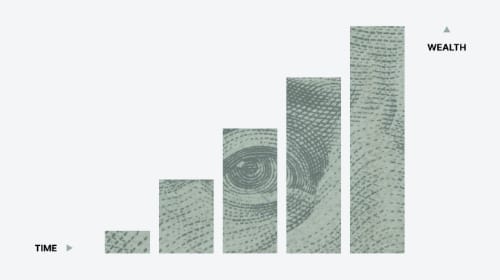Key Takeaways:
- A well-planned internal linking strategy is critical for both user navigation and search engine indexing.
- A logical hierarchical website structure and internal linking can significantly improve SEO visibility and search rankings.
- Building a site with the user journey in mind enhances the overall consumer decision-making process.
- Internal linking not only aids in navigation but also passes link equity, boosting page rank within the site.
- Poor site architecture, characterized by excessive clicks to important pages and isolated pages, can hinder SEO performance.
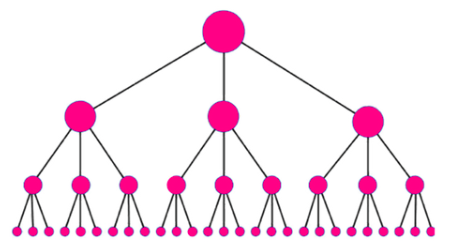
What is SEO Site Structure and Why is it Important?
The structural layout of pillar pages and topic clusters on a site, specifically as it applies to the logical structure and hierarchy of all the pages and their associated information. Essentially, it is the way users and search engines navigate a site to reach their intended destinations with as few clicks as possible.
When users land on a site, they should be able to easily navigate and identify information to satisfy their search query by following logical paths of navigation and content succession. If not, they will bounce and abandon their site engagement and/or purchase path. Search engine bots crawl and index pages based on this same logic; spiders will crawl each page, parsing logical information succession based on context and the internal linking structure among pages. A well-structured site will provide bots differentiated page experiences that are easy to crawl and understand, thus, indexing these specific pages and matching them to user queries. Now that search engine algorithms utilize machine learning and contextual cues, site and information structure is essential to SEO visibility and rankings for targeted user queries.
Related: How to Create a Sitemap
Benefits Website Structure for SEO (Search Engine Optimization)
Creating a solid site structure can be extremely beneficial for users, search engines, and your bottom line. First and foremost, improving structural flow of a site can dramatically enhance the consumer decision journey from upper to lower funnel. Providing logical and organized on-site paths helps users discover and learn about your products, getting to their point of interest more quickly and efficiently. By enhancing the consumer journey with clear information paths on your website’s pages, you have created a more enjoyable experience for users to interact, engage, and consume content on the site.
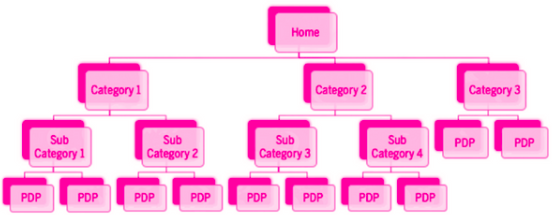
Additionally, an enhanced site structure with proper internal links pointing pages of the same topic cluster can help to boost both upper-level keyword rankings and long-tail keyword rankings on the site. The idea here is that pages on the hierarchical structure of a site should link appropriately to and from other relevant individual web pages, helps search engines crawl and understand the relationship between categories and more granular sub- category or product pages.
A great example of this implementation comes from our client, Skullcandy. Their broad level category page for earbuds leverages internal links to relevant, granular earbuds pages such as “wireless earbuds” and “sport earbuds”, effectively boosting rankings for the top-level queries on the earbuds page as well as long-tail rankings for search results on these granular pages.
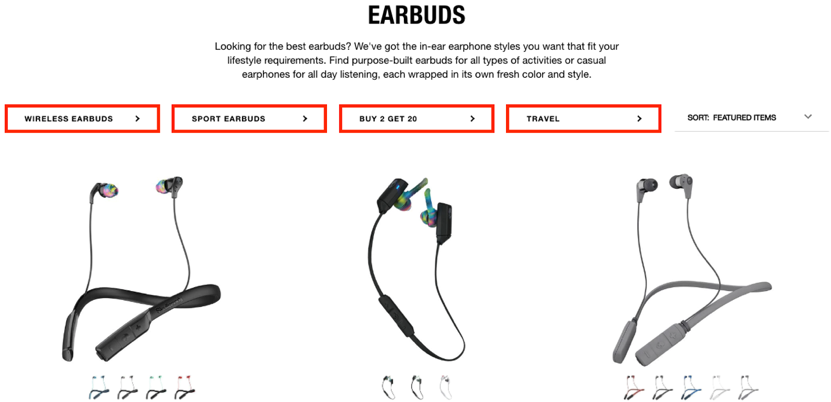
Along with these on-page factors, descriptive internal links are known to pass valuable link equity and authority between interconnected pages on a site. The value of this link equity passed among related web pages also contributes to the internal page rank on the site, one of the numerous factors search engines consider when rankings pages in SERPs.
Attributes of Good SEO Site Architecture
The diagram below exemplifies the desired attributes of a well structured website for seo. These attributes include:
-
Using no more than just a few clicks to reach the most important pages & blog posts on your site. (ideally 3 clicks)
- Leveraging relevant links to cascading information areas on different category pages
-
Employing relevant internal links to boost vertical and horizontal link flow, improving page rank of your internal pages.
The impact of this site design helps search engines includes an optimized distribution of link flow, easy crawlability for bots, and strong correlations among page content and rankings for keywords.
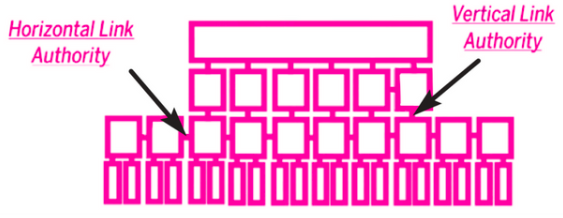
Example of Poor Website Architecture
The diagram below is an example of a flat website architecture that is poorly designed. Attributes of the site include too many clicks to reach important pages, isolated pages, and strictly vertical link flow. The impact of this site design includes distributed link flow, easy crawlability, and strong rankings for keywords.
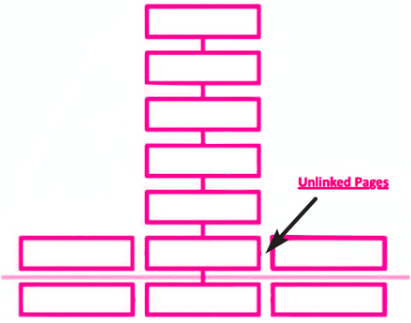
How to Plan Internal Links & SEO Website Structure
- To start your SEO campaign, begin with doing a self-audit of your website.
- Build the site’s structure with the user in mind, not to manipulate search engine algorithms.
- The URL structure of pages should match the site’s hierarchy.
- Anchor text of internally linked pages contains valuable keywords.
- Include Schema Markup to improve structured data to your individual pages.
- Analyse competitor’s site structure do a keyword research to discover content gaps.
How to Evaluate Your Own SEO Site Structure?
So, how can you tell if your site’s structure could use a facelift? Here are a couple of red flags to look for when analyzing your site that may be caused by a poor SEO site structure.
- The site’s navigation and linking structure is flat.
- High bounce rates or drop off rates at specific pages.
- Users have to click more than 3 times from the home page to get to the site’s most important pages.
- URLs on your site are not ranking well or for the intended keyword query
- Use Google Search Console to check for broken pages on your site.
Related: Site Depth & Inner Link Onsite SEO 101
Conclusion
The way a site is organized and structured lays the foundation that many other SEO initiatives are built on. Here at TEAM LEWIS we believe a technically sound site structure helps to promote optimal SEO visibility; because content cannot be viral if it is not visible! While it is entirely possible to optimize a pre-existing site structure with the right strategy and resources, it is best to map out a site’s hierarchy as early as possible during a site’s build, specifically ahead of content planning. Of the many technical SEO tactics, this one rests at the top of our priority list for our clients and we think it should be for you too.
In need of web design or SEO services? Contact us today.


